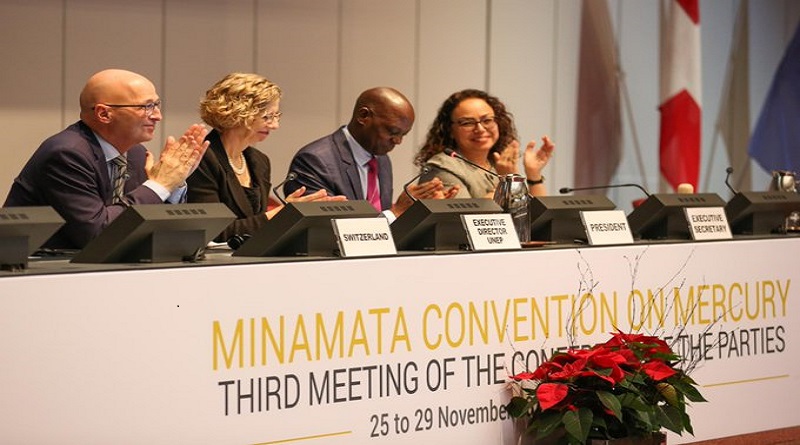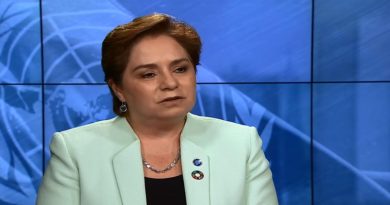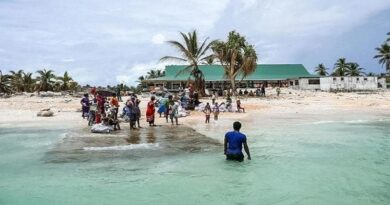UNEP’s Inger Andersen inaugurates COP3, lists four specific actions to tackle mercury pollution
The third Conference of the Parties to the Minamata Convention on Mercury (COP3) kicked-off in Geneva, Switzerland on Monday 25 November 2019 with a call on Parties, observers and other participants to take decisions that would protect human health and the environment from mercury pollution in all its forms.
Executive Director of the United Nations Environment Programme (UNEP), Inger Andersen, who inaugurated COP3 in Geneva, listed four specific actions to do by all the Parties and other global environment family to tackle mercury pollution.
According to her, there is need for action on status and actions needed in artisanal and small-scale gold mining; stemming the mercury trade; coal and climate change and e-waste. The UNEP chief who explained that these are just four action areas also called for science-policy interface and collaboration and cooperation.
Andersen went further “These are just four specific action areas. To help make the necessary changes in these areas, the Convention needs to be the best it can be. Parties need to have the capacity to deal with the issues. And they need the best scientific and technical knowledge. Global Mercury Assessments and other scientific publications form the basis of the Convention. Knowledge on the health effects of mercury is critical in addressing pollution. But we need to dig deeper into its impacts, particularly on the environment.
“We urgently need to strengthen the science-policy interface at all levels to support and promote science-based action on the sound management of chemicals and waste beyond 2020. One problem is that the geographical coverage of mercury biomonitoring networks globally is limited. Most Asian countries are minimally involved, with the exceptions of Japan and the Republic of Korea. This is a problem given that a lot of the growth in mercury use is happening in Asia. We must implement initiatives such as the Asia Pacific Mercury Monitoring Network, launched by the US Environmental Protection Agency, and Japan’s project to strengthen national capacity and support a region-wide network of mercury monitoring laboratories.
“What you decide in the coming days, and what you and your colleagues do when you return to your countries after the meeting, is critical to the well-being of people, animals, ecosystems and economies. Mercury pollution lingers in our environment, cycling between the atmosphere, ocean, and land. It is in the food chain. It causes serious health problems and can threaten the development of unborn and young children. It undercuts the Sustainable Development Goals on good health and well-being, clean water and sanitation, decent work and economic growth, life below water, life on land and many more.
“There is no doubt that mercury pollution is a menace. And it is a growing menace. Human activities have increased total atmospheric mercury concentrations by about 450 percent above natural levels. UNEP’s Global Mercury Assessment Report 2018 found that mercury emissions into the atmosphere rose 20 percent between 2010 and 2015, despite additional regulatory actions. The majority of the 2015 emissions occurred in Asia, with increased economic activity bringing industrial activities that use mercury”, she added.
She however, said though the Minamata Convention is the youngest world multilateral environmental agreement that entered into force just over two years ago in response to growing concern over the impact of mercury emissions on human health and the environment, “I am sure it will deliver results just as beneficial to people and nature as Multilateral Environment Agreements that have gone before it.”
President of MinamataCOP3, David Kapindula of Zambia, said “We must avoid building a legacy of unresolved issues that will adversely affect our ability to achieve the objective of the Convention. I look forward to your support and cooperation in making our meeting truly a success.”
Executive Secretary of the Minamata Convention, Rossana Silva, said “The adoption of the Minamata Convention is the point of departure of a new time-line that started in 2013 when the international community showed with one voice its determination to address the negative effects of mercury”.
Since the Minamata Convention entered into force in 2017, Parties have been working together – to disrupt the trade of mercury; raise public awareness; build institutional capacity and create mercury free products among others to make mercury history.
Over 1,000 delegates comprising UN agencies officers, Parties, civil society, media among others are in Geneva for the week-long Minamata COP3 that will end on Friday.
Meanwhile, the government of the Republic of Korea on Friday 22nd November 2019 deposited her instrument of ratification to the Convention bringing the number of Parties to 115.




